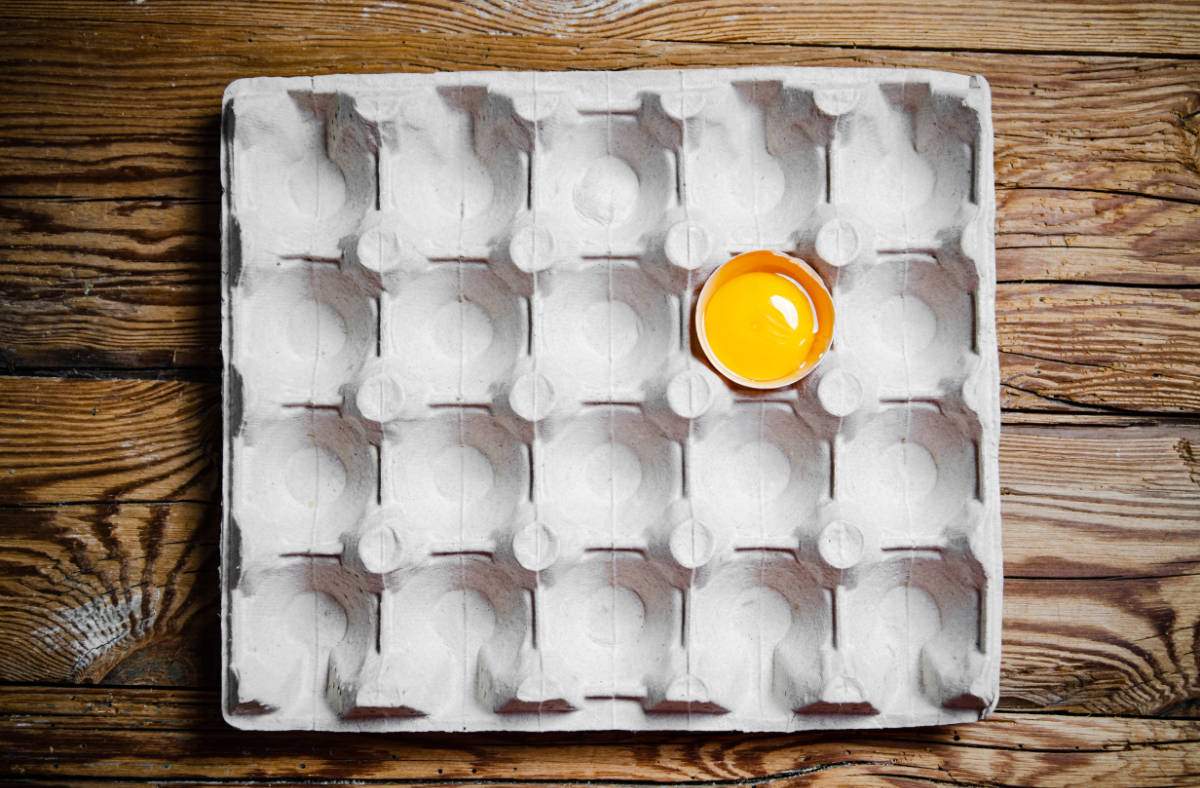Clients may desire washboard abs, whereas trainers may focus on the role of core stability in injury prevention and overall health. But how effective is specific core training?
Abdominal and trunk aesthetics is a common discussion topic between personal trainers and their clients. Social media perpetuates this, showcasing an endless array of individuals with lean hard trunks and ripped abdominal sections performing a huge variety of the most obscure exercises imaginable. Every trainer you talk to about this will have a personal favourite exercise that hits them in just the ‘right’ spot. Trainers from different fields of exercise will all have different cues and language that describes the way you should contract your core muscles to get the best outcome.
Of course, it’s not just about how good your six-pack looks. The key reason why core stability training has become prominent in training and research is the critical link of the lumbar spine providing structural control between the trunk and the hips and its role in prevention of low back pain and lower limb injury. However, core stability is now more commonly referred to as motor control stability. This allows us to use the concept globally across all joints and regions rather than just the trunk and lumbar spine. It must also be remembered that the value of motor control stability is in the way it acts to prevent motion rather than initiate it.
In looking at trunk stability, it must be remembered that the anatomy of the structures around the trunk and ‘core’ are far more complex than just the abs. Passive stiffness of the lumbar spine is provided by the osseoligamentous structures. The thoracolumbar fascia acts like a proprioceptor giving feedback to lifting activities, as well as being a large attachment structure for transversus abdominis (TrA). The paraspinals are essentially thoracic muscles that act on the lumbar via a long tendon that attaches to the pelvis (Akuthota et al. 2004). The quadratus lumborum has no direct action on the lumbar spine, but is thought to be a major stabiliser of the spine (McGill 2001). The TrA and obliques increase abdominal pressure by reducing the circumference of the waist. In isolation, the TrA will increase the lumbar curve when contracted by pulling the lumbar spine inward, increasing lordosis. When contracted jointly with the diaphragm and pelvic floor muscles, they provide increased spinal stability. Rectus abdominis is typically trained to cause trunk forward flexion, and the thinking that crunches and sit ups are the only way to get rock hard abs has led to an over dominance of this muscle in all core work. In addition to these are the connecting muscles that attach to ribs and thoracic spine, as well as the muscles of the hip and thigh which all play a role in influencing trunk function. Finally, the muscles that are often forgotten when trunk strengthening are the diaphragm and the pelvic floor. ‘True spine stability is achieved with ‘balanced stiffening from the entire musculature, including the rectus abdominis and the abdominal wall; quadratus lumborum; latissimus dorsi; and the back extensors of longissimus, iliocostalis, and multifidus’ (McGill 2010).
Tranversus abdominis and hollowing
One of the common threads that has come through in all research is the need to maintain a normal lumbar curve in order to allow the trunk musculature to function effectively (Reeve & Dilley 2009). Research shows that maintaining normal lumbar posture is important for general spine health and care should be taken with lumbar flattening or allowing posterior tilting in exercises when targeting improved lumbo-pelvic control. McGill believes it is impossible to train muscles such as transverse abdominis or multifidus in isolation – people cannot activate just these muscles (2009). Hence, all the research around the contraction of TrA is questionable.
Watanabe et al. (2015) found that seated with an anterior tilt and standing postures where TrA was contracted, created more co-contraction of multifidus than seated with neutral or posterior tilted postures. In contrast, Pinto et al. (2011) found that patients with no low back pain were able to achieve increased thickness in TrA when in flattened lumbar spine, compared to normal lumbar curve, and people with low back pain were not. However, muscle activity of accompanying muscles of the trunk was not monitored, and abdominal bracing combined with flattening of the lumbar spine may in fact actively promote the rectus abdominis muscle. A study by Jung-Seok Lee and colleagues (2015) compared the abdominal drawing-in exercise using biofeedback with curl ups, side bridges and bird dog exercises. They found little difference between the groups, although the TrA was found to be thicker after the intervention for the group focused on the abdominal drawing-in exercise. It has also been reported that drawing in the abdominals fails to target the major stabilisers of the spine and actually reduces stability (Potvin and Brown 2005), yet many trainers continue to promote this action when teaching core training exercises. A study by Koumantakis et al. (2005) compared the addition of specific stabilisation exercises, including specific TrA contraction, to a general back and abdominal muscle exercise approach for patients with subacute or chronic nonspecific back pain. They found that adding the abdominal hollowing, through trying to add TrA activity, actually reduced effectiveness of the activity and provided no additional benefit to patients with subacute or chronic low back pain.
The value of contracting TrA for sacroiliac stability has also been questioned. Richardson et al (2002) suggested if TrA is contracted independently of the other trunk muscles it would decrease laxity of the sacroiliac joint, yet Gnat and colleagues found no stiffening of this joint when contracting the same muscle (2015). Ainscough-Potts et al. (2015) reported that when the subjects sat on a ball supported by both legs, there was no change in the transversus abdominis and internal oblique activity. However, when subjects sat on a ball supported by one leg, the activity of transverse abdominis increased. It appears that single leg activity creates greater demand on these muscles than two-leg seated or standing postures. Most researchers agree that the TrA has a role in stability and needs to be trained separately to other trunk muscles and taught how to contract tonically (Hodges 1999). However, there remain questions over an individual’s ability to contract TrA without the use of ultrasound.
Increased passive stiffness appears to be the end goal for many core training programs as it enhances load bearing ability, reduces painful vertebral micromovements, and enhances ballistic distal limb movement (Lee et al. 2015). These researchers found that isometric stiffness training was far superior in improving trunk stiffness when compared with a dynamic training program over six weeks. The researchers suggest this was due to the increased time under tension of isometric exercises and the low loads allowing people to perform them daily.
EMG studies
Many studies have shown that EMG (electromyography) activation in the rectus abdominis and external oblique muscles reduces with the start of the pelvis moving in the exercise e.g. sit ups (Monfort-Pañego et al. 2009). Research shows this increases compressive forces on the lumbar spine, a finding which has contributed to the suggestion that these types of exercises should not be prescribed. Martuscello et al. (2013) in their systematic review of core muscle activity reviewed a range of studies, including traditional core, core stability, ball, free weight and non-core related exercises. They report that none of the studies reviewed were high quality.
The outcomes of this review suggest free weight exercises, such as the squat and deadlift, produce more activity of the lumbar multifidus muscle, and all other forms of exercise appear to be equally effective at producing activity of the transverse abdominis muscle. The authors go on to suggest that adding isolated core exercises to supplement a comprehensive fitness routine involving multi-joint free weight exercises is probably unnecessary to activate the core muscles. This review proposes that trainers should focus on implementing multi-joint free weight exercises, rather than core-specific exercises, to train the core muscles in their clients.
In summary, the concept of core stability is often a reductionist approach and has not really been shown to provide value to the average healthy client seeking to improve trunk stiffness. There are mixed opinions on the value of specific core training and in many cases research has shown that general activity is more effective than specific core exercises. Questions remain not only about an individual’s ability to contract the inner muscles of the trunk, but also about the ability of a personal trainer to gauge whether the muscles being used or contracted are actually being utilised correctly.
Dr Mark McKean PhD AEP CSCS is a sport and exercise scientist and Level 3 Master Coach with ASCA. He is Adjunct Senior Research Fellow at USC.


